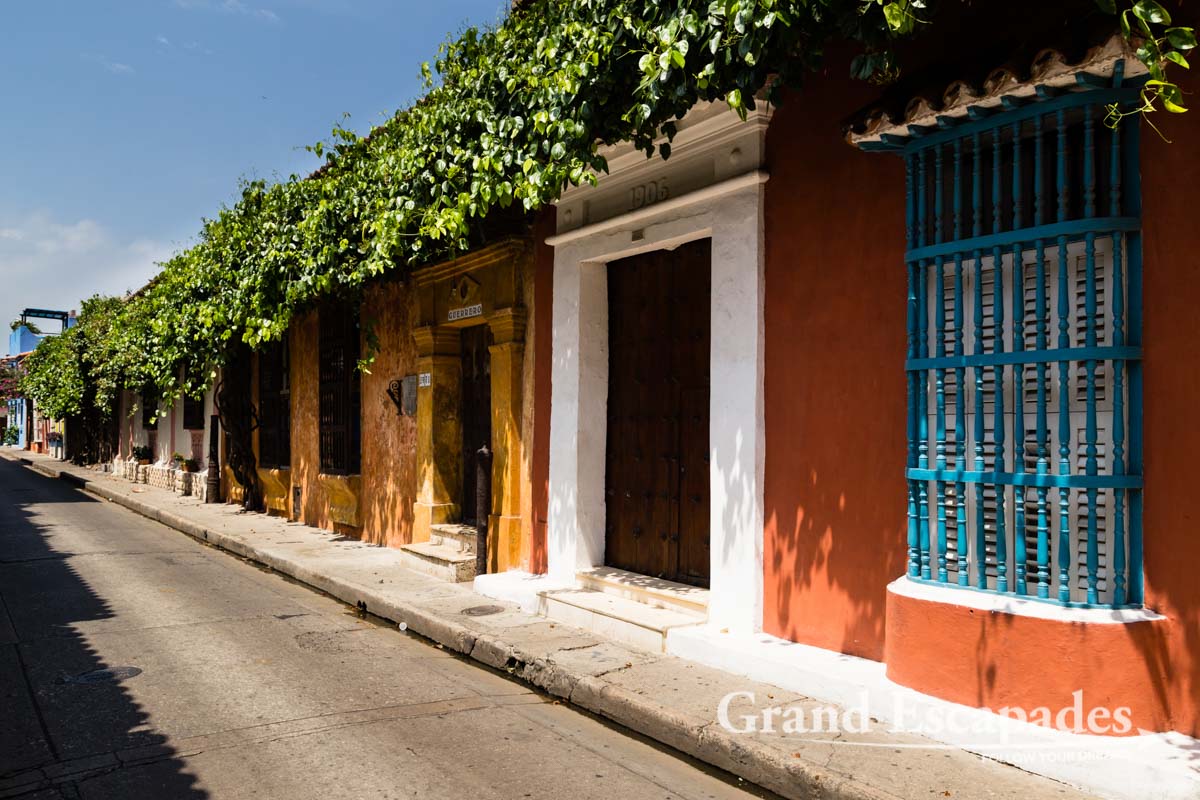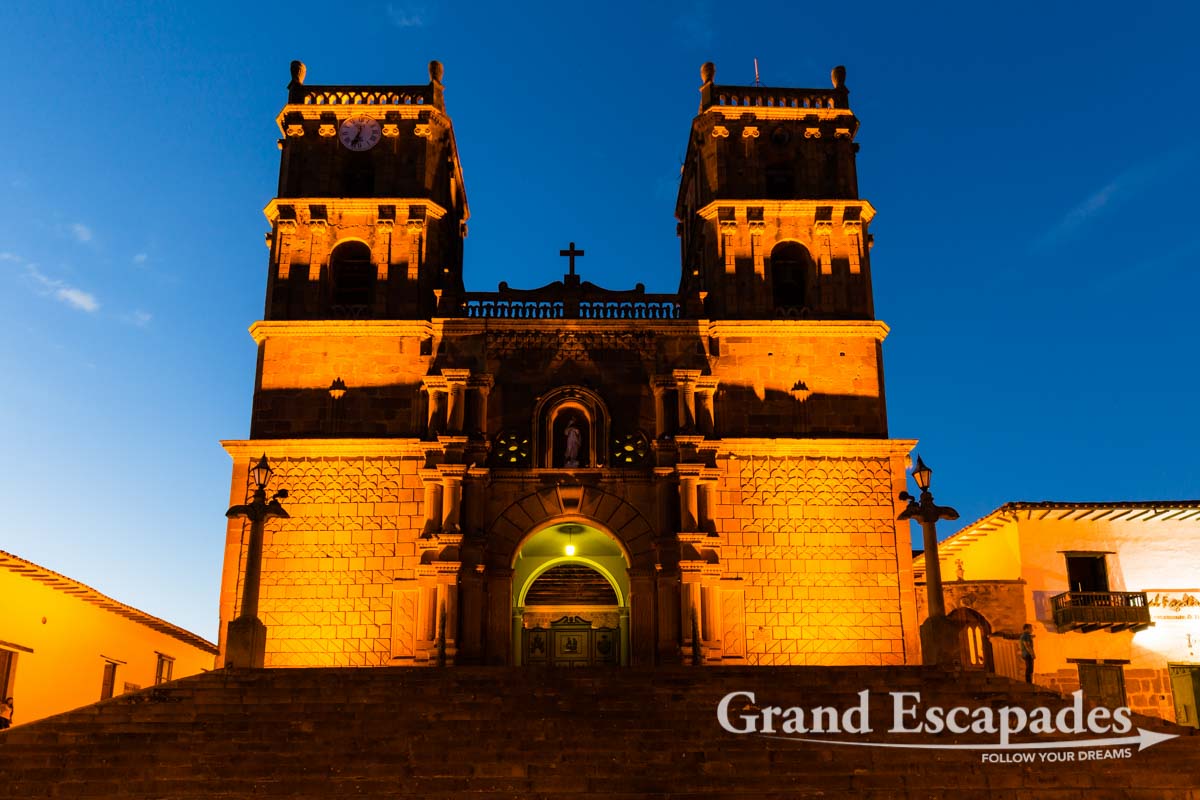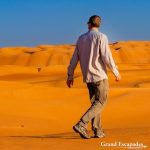A Game Of Colors
Caño Cristales (in English: “Crystal Spout”), in the Parque Nacional Natural Sierra de la Macarena, is situated approx. 350 kilometers Southeast of Bogota. The river is also called the “River of Five Colors” or the “Liquid Rainbow” (yes, Colombians even call it “the most beautiful river in the world”). Why? From July to November, the riverbed is colored yellow, green, blue, black, and especially red, due to the “Macarenia Clavigera”, a reddish endemic algae that flourishes especially in the rapids of the river.
And this is what you come here for: a river with various vivid colors, waterfalls of unique shapes, water clear as crystal, and an untouched nature…
Unique Waterfalls
On top of this game of colors, Caño Cristales offers a number of beautiful waterfalls. True, those do neither belong to the highest, nor to the biggest in the world… But some of them have truly unique shapes, like “Los Pianos” & especially “Los Ochos”, a sight of its own!
Caño Cristales – The New Kid On The Block
This natural wonder has been completely out of reach for decades: between 1989 & 2013, the area was under the control of the FARCs and other guerilla groups, and heavy fighting occurred as close as the village of La Macarena. The whole area was also dedicated to Coca production and lived from “Narco-Traffic”… Only 3 years ago could the Colombian government secure parts of the area, and with peace recently signed in Havana, the area is now stable. Nonetheless, the military presence is absolutely impressive! Heavily armed soldiers are everywhere: in the city, on the road, on the river, in the National Park…
Tourism is hence completely new in Caño Cristales: even if a few intrepid & dairy visitors came here as early as 2009, when the Colombian army resumed control of La Macarena and of parts of the Parque Nacional Natural Sierra de la Macarena, tourism was legally possible only from 2013.
Ecotourism, Sustainability & Communautary Approach
More often than not, Ecotourism is little more than some nice marketing slogans… Here, the respect of a unique ecosystem and sustainability are taken very seriously!
You are not permitted to take plastic water bottles into the National Park. It is also not allowed to use sunblock or mosquito repellent, which could threaten the purity of the water and the very fragile “Macarenia Clavigera” algae.
Guides are very serious about the environment, and they will make sure you only swim in places where you do not endanger the very fragile algae, and that you do not leave any garbage or waste behind. On top of that, there is a very strict “numerus clausus”, i.e. a limited number of people who can visit each sight per day (ranging between 40 and 80 people a day, depending on the sight)…
Last but not least, the whole village adopted what they call a “communautarity” approach: all services are performed exclusively by locals, and everyone should profit from tourism – That way, more than 500 families in this small village are one way or the other involved in tourism… And actually profit from it. Impressive!
Cultural Dances
This is also something I am very cautious about… Those “Cultural Evening & Traditional Dance Performances”, that you are invited to visit when on a tour.
The evening we experienced in La Macarena was very different. Yes, both musical & dance performances were excellent! But more important was that between each music and dance performances, a speaker would talk about Caño Cristales, the importance of sustainability and the objectives of the community. An evening everyone should partake in…
Oil? You Said Oil?
There is unfortunately a downside to this unique place, or let’s say something that makes it even more unique: OIL… The underground of the Parque Nacional Natural Sierra de La Macarena is very rich in oil. That represents A LOT of money, and “a small river with some funny algae” won’t have much weight against a world hungry for fossil energy and especially hungry for oil (and ready to wage wars to secure oil supply). That would of course mean the death of Caño Cristales and dire poverty for the inhabitants of the area, as oil extraction almost always means!
I invite you to sign the petition to safeguard the future of Caño Cristales, so that this unique area remains as beautiful and untouched as it is now.
Caño Cristales As A Photographer
Caño Cristales offers both many unique opportunities and many, many challenges for photographers… So if photography is a priority for you as it is for me, here are the lessons I learned the hard way from 4 days in Caño Cristales…
- The Light
The weather will most likely not be perfect… It will actually be your biggest challenge, and might bring along some bad disappointment…
It’s actually a bit of a catch 22: to have enough algae you need water and hence rain. To have optimum colors, you need sun, ideally a strong midday sun (yes, probably one of the very few times in your career as a photographer where you will be looking for the midday sun).
The only season when you can visit Caño Cristales is during the rainy season in the Parque Nacional Natural Sierra de la Macarena, from June to November. So you will have a lot of rain and not much sun… Not ideal for the perfect picture!
By the way: it can rain heavily, and you will be gone in the National Park all day, with no protection from the rain whatsoever… So plan accordingly to protect your gears from water!
- Contrasts
With partly poor weather conditions, contrast is often not sufficient for decent picture. If you are visiting on a rainy day, there is very little you can do but hope for a better weather on the next day…
A Polarization Filter might slightly help, but it won’t do miracles if the sky is great and the light is too soft…
- Shutter Speed
Chose side, and go either for long exposures (do not forget your tripod – Yes, challenging when you walk 10 to 13 kilometers on rocky terrain) or very short exposures (to freeze the flowing water and have clear pictures of all the colors, including the red algae quickly moving in the rapids of the river… Do not hesitate to increase ISO to reach 1/320 or better 1/500 second).
I strongly recommend taking your tripod anyway. These were the best pictures, or actually the only decent ones when the light was extremely poor due to the rain and the grey, low sky.
- Composition
The main question you should ask yourself when taking a picture is: “Do I have all the colors?” What makes this river so special is the game of colors, so try to have them all on one picture. This of course includes the green of the surrounding vegetation, and if you are lucky the blue of the sky…
- Under Water Photography & “Cut Photography”
The special thing in Caño Cristales is this small reddish algae, the “Macarenia Clavigera”. So you will need or at least want at some point an underwater camera, to be able to take pictures of the algae. You can also try “cut photography”, half above, half below the water level…
A GoPro can do the trick, and unfortunately, I had left mine in Bogota in an attempt to travel lighter… Poor idea!
Planning A Trip There?
- When to go there?
Caño Cristales is only open in the rainy season, when there is enough water in the river, from June to November. At other times of the year, the National Park is simply closed.
- How to get there?
La Macarena is only reachable by plane. There are several daily flights from Villavicencio, 3 weekly flights from Bogota (Monday, Wednesday, Saturday) and also several weekly flights from Medellin.
At the time of writing, both Satena & Sarpa were offering flights to La Macarena, and a return flight from Bogota cost approx. 200 Euros. Book a few days in advance, as those are small planes that might be sold out! You do not need the services of a travel agency to book the flight…
- Go independently or on a tour?
The first and most important question is: do you speak Spanish?
If yes, go there independently, and contact directly a local agency to organize the tour in the National Park (you need a guide and you need to be registered). Ecoturismo has a very good reputation.
If you do not speak Spanish, the help of an agency based in Bogota or in Medellin (with people speaking English) is maybe not such a bad idea, as only very, very few people speak English in La Macarena…
Also check this blog for more information and a first hand experience on independent travel there.
- Where to sleep?
There are not many hotels in La Macarena, the village near the National Park / Caño Cristales and the options are still very basic but for one very pleasant place that is booked out very early (mostly by Colombian tourists who plan their visit months in advance). So do not expect to splurge there! Note that the Shalom Hotel where we stayed was squeaky clean… But simple!
- What to take?
Since you are not allowed to use sunblock or mosquito repellent inside the National Park, you will need long pants and long sleeves, and a good hat to protect both your head and your neck from the scorching sun. Those will also protect you against mosquitoes.
In the meantime, you will be wet either from the rain, or from the many river crossings: in the beginning, you will be able to jump from stone to stone and proudly avoid your shoes getting wet, and at the end of the day, you will cross a river with water reaching your breast… So yes, you will get wet, and with this climate, clothes simply… Do not dry!!!
You are not permitted to enter the National Park with “open shoes” (sandals, flip-flops, …), and good walking shoes are absolutely recommended, as you will walk 10 to 12 kilometers a day on rocky terrain. If you have the luxury to have a second pair of shoes, you will avoid putting shoes on in the morning that are still soaking wet…
Plan also a good poncho, as it might heavily rain, not only for you but also for your camera and everything that you carry on with you!
Agencies insist on the necessity to have proof of a Yellow Fever vaccination. Well, we were never asked for it, but it is indeed written everywhere that you need it.
- How long to stay there?
Of course it depends how much time you have at hand… The 3 days / 2 nights options mean you only have one day in Caño Cristales, which is short and especially risky, considering the weather (on the first and the last day, you will be taken to areas surrounding the National Park). This is why you should at least plan 4 days / 3 nights there.
- What weather can you expect?
As mentioned above (Caño Cristales As A Photographer), be ready for heavy rain and no place to find shelter from the downpours, but also for a very strong sun and no place to hide from this scorching sun.
Temperatures depend on the weather, and are pleasant when it rains (25 to 28 degrees Celsius), and hot in the sun (30 to 35 degrees Celsius).











































